Uso de smartphones y redes sociales en alumnos/as de Educación Primaria
Palabras clave:
Smartphone, competencia mediática, redes sociales, Educación primaria, YouTube, Instagram, Snapchat, Musical.lyResumen
Los altos niveles de penetración de dispositivos móviles entre la población infantil están provocando un crecimiento significativo entre los usuarios de redes sociales en este nicho poblacional conocido como «nativos digitales». Un contexto de conexión continua y acceso directo a Internet propician un uso de smartphones constante, haciendo que la competencia mediática de los más pequeños se desarrolle de modo informal a través de redes sociales. La investigación que aquí se presenta se justifica por este fenómeno de niños y niñas conectados cada vez a menor edad y durante más tiempo. El objetivo es determinar el grado de uso de cuatro redes sociales en población infantil: Instagram, Snapchat, YouTube y Musical.ly y estudiar el desarrollo de competencias mediáticas en contextos informales. El estudio, de tipo descriptivo correlacional y cuantitativo, se centra en una muestra de 140 alumnos de Educación Primaria de edades comprendidas entre los 11 y 12 años y supone el primer paso para una investigación de mayor alcance. Las primeras conclusiones muestran un grado de uso significativo de las redes sociales en estas edades y un nivel de competencia mediática medio-alto en las tres dimensiones estudiadas: acceso, comprensión y creación de contenido digital.
Descargas
Citas
Ahern, L., Feller, J., and Nagle, T. (2016). Social Media as a Support for Learning in Universities: An Empirical Study of Facebook Groups. Journal of Decision Systems, 25(1), 35-49. https://doi.org/10.1080/12460125.2016.1187421.
Castells, M. (2010). Globalisation, networking, urbanisation: Reflections on the spatial dynamics of the information age. Urban Studies, vol. 47 (13), 2737-2745. DOI: 10.1177/0042098010377365
Chaudron, S. (2015). Young Children (0-8) and Digital Technology: A qualitative exploratory study across seven countries. Luxembourg: Publications Office of the European Union. Recuperado de https://doi.org/10.2788/00749
CISCO (2016). Global Mobile Data Traffic forecast, 2015-2020. Recuperado de http://www.cisco.com/c/en/us/solutions/collateral/service-provider/visual-networking-index-vni/vni-forecast-qa.pdf
Common Sense Media. (2016). Tech at the table: Family Dinner at the Digital Age. Recuperado de https://www.commonsensemedia.org/sites/default/files/uploads/landing_pages/fact_sheet_family_dinner_in_the_digital_age.pdf
Díaz-Bustamante-Ventisca, M., y Llovet-Rodríguez, C. (2017). Empowerment or impoverishment of children from social networks? Perceptions of sexualized images of girls in Instagram. El profesional de la Información, 26(1), 77–87. https://doi.org/10.3145/epi.2017.ene.08
Findahl, O. (2013). Swedes and the Internet. Stockholm: the Internet Infraestructure Foundation. Recuperado de https://www.iis.se/docs/Swedes_and_the_Internet-2013.pdf
Gao, W., Liu, Z., and Li, X. (2018). The dark side of ubiquitous connectivity in smartphones-based SNS: An integrated model from information perspective. Computers in Human Behaviour, vol. 84, 185-193. DOI: 10.1016/j.chb.2018.02.023
Garmendia, M., Jimenez, E., Casado, M. A. and Mascheroni, G. (2016). Net Children Go Mobile. Riesgos y oportunidades en Internet y el uso de dispositivos móviles entre menores españoles (2010-2015). Madrid: Red.es/Universidad del País Vasco. Recuperado de http://www.ehu.eus/documents/1370232/0/Informe+NET+CHILDREN+RED.ES+Espa%C3%B1a+2016.pdf
Gewerc, A., Fraga, F. y Rodés, V. (2017). Niños y adolescentes frente a la Competencia Digital. Entre el teléfono móvil, youtubers y videojuegos. Revista Interuniversitaria de Formación del Profesorado, 89, 171-186. Recuperado de http://aufop.com/aufop/revistas/arta/impresa/202/2129
Holloway, D., Green, L. and Livingstone, S. (2013). Zero to eight. Young children and their Internet use. LSE, London: EU Kids Online.
Jenkins, H. (2014). Rethinking Convergence Culture. Cultural Studies, vol. 28(2), 267-297. DOI: 10.1080/09502386.2013.801579
Judge, S., Floyd, K. and Jeffs, T. (2015). Using mobile media devices and apps to promote young children's learning. In K. L. Heider y M. R. Jalongo (Eds.), Young children and families in the information age, educating the young child (Vol. 10, pp. 117–131). New York, NY: Springer.
Howe, N. y Strauss, W. (2000). Millennials rising: The next great generation. New York: Vintage Books
ITU. (2016). Measuring the Information Society Report. Recuperado de https://www.itu.int/en/ITU-D/Statistics/Documents/publications/misr2016/MISR2016-w4.pdf
Livingstone, S. and Bovill, M. (Eds.). (2013). Children and their changing media environment: A European comparative study. London: Routledge.
López, F. (2002). El análisis de contenido como método de investigación. XXI Revista de Educación, 4, 169–179. Recuperado de http://rabida.uhu.es/bitstream/handle/10272/1912/b15150434.pdf?sequence=1
McDonald, N.M. and Perdue, K.L. (2018). The infant brain in the social world: Moving toward interactive social neuroscience with functional near-infrared spectroscopy. Neuroscience and Biobehavioral Reviews, vol. 87, 38-49. DOI: 10.1016/j.neubiorev.2018.01.007
Miron, E. y Ravid, G. (2015). Facebook Groups as an Academic Teacher Aid: Case Study and Recommendations for Educators. Journal of Educational Technology y Society, 18(4), 371-384. Recuperado de https://goo.gl/QEoduq
Murillo, E. (2017). Attitudes toward mobile search ads: a study among Mexican millennials. Journal of Research in Interactive Marketing, vol. 11(1), 91-108. DOI: 10.1108/JRIM-06-2016-0061
Ofcom. (2009). Audit of learning-related media literacy policy development. Recueprado de http://stakeholders.ofcom.org.uk/binaries/research/media-literacy/Education_Policy_Audit_for_1.pdf
Ofcom (2015). The Communication Market Report. Recuperado de https://www.ofcom.org.uk/research-and-data/multi-sector-research/cmr/cmr15/international
Palfrey, J. G. (2016). Reframing privacy and youth media practices. En C. Greenhow, J. Sonnevend and C. Agura, Education and Social Madia: toward a digtal Future, (pp.113-130). New York: The MIT Press.
Palfrey, J. G., and Gasser, U. (2008). Born digital: Understanding the first generation of digital natives. New York: Basic Books.
Pérez-Escoda, A., Castro-Zubizarreta, A. y Fandos, M. (2016). Digital Skills in the Z Generation: Key Questions for a Curricular Introduction in Primary School. Comunicar, 49, 71-79. https://doi.org/10.3916/C49-2016-07
Pérez-Escoda, A. (2017). Alfabetización mediática, TIC y competencias digitales. Barcelona: UOC Editorial.
Pérez-Tornero, J.M., Celop, P. and Varis, T. (2007). Study on the Current Trends and Approaches to Media Literacy in Europe. Recuperado de http://ec.europa.eu/culture/library/studies/literacy-trends-report_en.pdf
Prensky, M. (2013). Our brains extended. Educational Lidership, vol. 70(6), 23-27. Recuperado de: http://www.ascd.org/publications/educational-leadership/mar13/vol70/num06/Our-Brains-Extended.aspx
Radesky, J.S., Schumacher, J., and Zuckerman, B. (2015). Mobile and interactive media use by young children: The good, the bad, and the unknown. Pediatrics, 135(1), 1–3. https://doi.org/10.1542/peds.2014-2251
Royal Society Public Health (2017). #Statusof mind. Social Media and Young People´s mental health and wellbeing. Recuperado de: https://www.rsph.org.uk/uploads/assets/uploaded/62be270a-a55f-4719-ad668c2ec7a74c2a.pdf
Scroeder, R. (2018). Towards a theory of digital media. Information Communication and Society, vol. 21(3), 323-339. DOI: 10.1080/1369118X.2017.1289231
Tapscott, D. (2008). Growing up Digital: How the net generation is changing your world. EEUU: McGraw Hill.
Teuwen, J., De Groff, D. and Zaman, B. (2012). Flemish Preschoolers Online: A mixed-method approach to explore online use, preferences and the role of parents and siblings. Etmaal van de Communicatiewetenschap, Belgium. Recuperado de https://goo.gl/vB3YnS
Ugalde, L., Martínez-de-Morentín, J. y Medrano, C. (2017). Pautas de consumo televisivo en adolescentes de la era digital: un estudio transcultural [Adolescents’ TV Viewing Patterns in the Digital Era: a Cross-cultural Study]. Comunicar, 50, 67-76. https://doi.org/10.3916/C50-2017-06
UNESCO. (2015). Incheon Declaration and SDG4. Education 2030 Framework for Action. Recuperado de http://unesdoc.unesco.org/images/0024/002456/245656E.pdf
Valkenburg, P. M. and Peter, J. (2009). The effects of instant messaging on the quality of adolescents’ existing friendships: A longitudinal study. Journal of Communication, 59(1), 79-97. Recuperado de http://onlinelibrary.wiley.com/doi/10.1111/j.1460-2466.2008.01405.x/full
Descargas
Publicado
Cómo citar
Número
Sección
Licencia
Los derechos de edición pertenecen a la Fundación iS+D para la Investigación Social Avanzada, entidad que edita la Revista Prisma Social, y es necesario su permiso para cualquier reproducción. En todo caso, será necesario citar la procedencia de cualquier reproducción total o parcial.
La publicación de artículos o reseñas en la Revista Prisma Social no da derecho a remuneración alguna.
Política de acceso abierto
La publicación de la Revista Prisma Social y su difusión se realiza de forma abierta a través de Internet.
La Revista Prisma Social ofrece acceso libre y abierto inmediato a su contenido de forma totalmente gratuita con el fin de hacer llegar la investigación científica a toda la sociedad y con el objetivo de crear una cultura reflexiva encaminada a la comprensión de los comportamientos sociales desde una perspectiva global.
Todos los contenidos digitales de la Revista Prisma Social son de acceso libre y gratuito y se publican bajo una licencia de Creative Commons:

está bajo una licencia de Creative Commons Reconocimiento-NoComercial-SinObraDerivada 3.0 España License.
Creado a partir de la obra en www.isdfundacion.org
Bajo esta licencia, está permitida la reproducción y difusión de los contenidos de la revista con fines educativos o de investigación, sin ánimo de lucro, siempre y cuando estos no se modifiquen, se cite la procedencia (Prisma Social, Revista de ciencias sociales), y la autoría.
Esta licencia a la que se acoge la Revista Prisma Social permite copiar, distribuir, exhibir los textos e imágenes de la revista, siempre que se cumplan las siguientes condiciones:
- Reconocimiento: Debe reconocerse y respetarse la autoría de la obra de la manera especificada por el autor y la entidad editora (Revista Prisma Social – Fundación iS+D).
- No comercial: No se puede utilizar esta obra para fines comerciales.
- No derivados: No se puede alterar, transformar o generar una obra derivada a partir de esta obra.
Se deberán establecer claramente los términos de esta licencia para cualquier uso o distribución de los documentos. Se podrá prescindir de cualquiera de estas condiciones si se obtiene el permiso expreso del autor/a.
Desde la Revista de Prisma Social se permite y se invita a los/as autores/as a ampliar la visibilidad, alcance e impacto de sus artículos publicados en la revista mediante la redifusión (auto-archivo) de los mismos en:
1. Sus espacios web personales (web, blog, redes sociales, foros científicos, etc.).
2. Archivos abiertos institucionales (archivos universitarios, Hispana, Europeana, etc.).
3. Redes sociales de naturaleza académica y científica (ResearchGate, Academia.edu, Getcited.org).
Se requiere que en dichas publicaciones se detallen todos los datos bibliográficos de la publicación.
Para más información, puede descargar y consultar las Condiciones de Publicación:

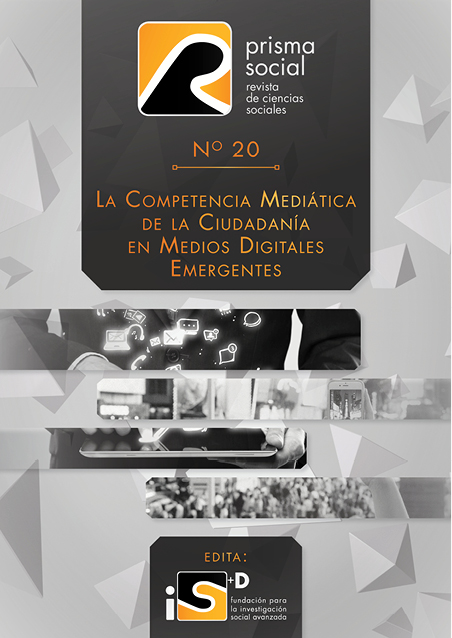



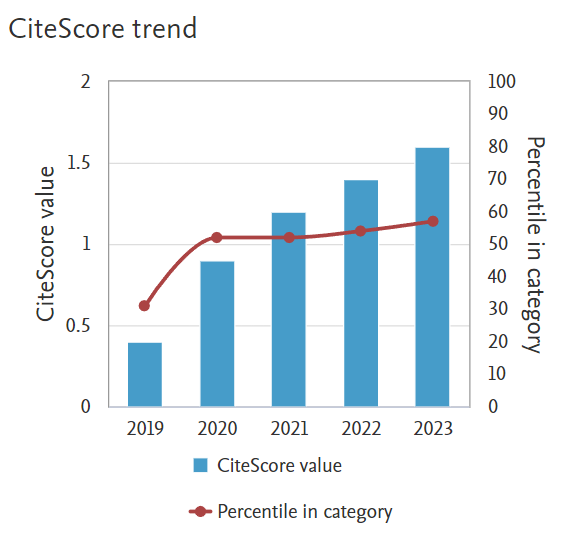
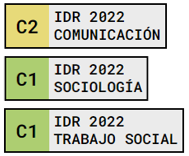
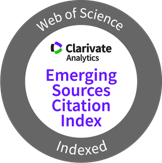
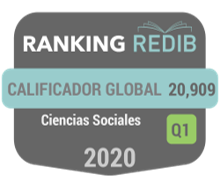
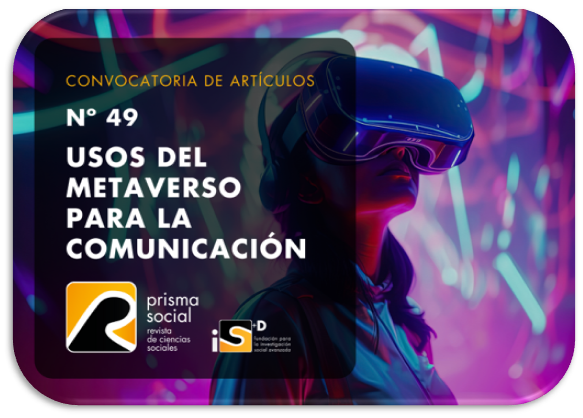
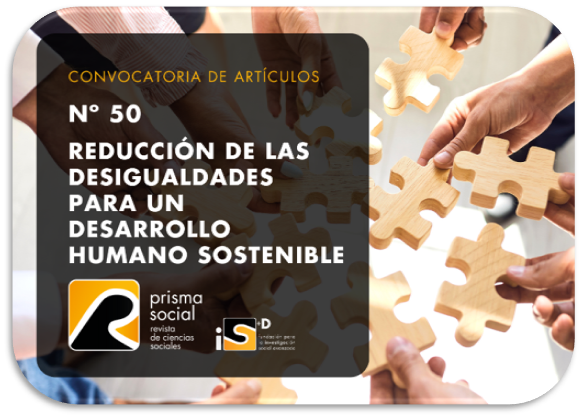












.png)





